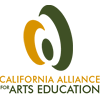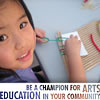By Heather Noonan, Vice President for Advocacy for the League of American Orchestras and Co-Chair of the ad-hoc National Arts Education Policy Working Group.
How will the next version of the Elementary and Secondary Education Act (ESEA) support access to the arts as part of a well-rounded education for every child? This month the Administration, Congress, and arts education advocates have advanced the conversation. Now is a critical time for arts advocates to engage in the real heart of the debate.
Speaking before the national Arts Education Partnership forum on April 9, US. Secretary of Education Arne Duncan delivered his view, declaring that the arts “can no longer be treated as a frill,” and reported that, during his national listening tour, “almost everywhere I went, I heard people express concern that the curriculum has narrowed, especially in schools that serve disproportionate numbers of disadvantaged students.”
The March 13 Obama Administration blueprint for re-writing ESEA lays out the Department’s view on federal education policy. Three areas of the...











